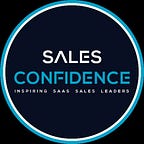Why should sales organisations worry about GDPR?
You’ve probably heard about GDPR. You’ve probably heard scare stories involving destroying data, or massive seven-figure fines if you step out of line. But as a sales leader, should you be worried?
The short answer is yes and no. It’s very likely that changes will have to be made to the way you handle customer data in your organisation. On the other hand, if you do it right, GDPR can be an opportunity, not a threat.
Let’s cut through the noise and examine what GDPR actually is. Then we’ll talk about how you can work in a post-GDPR world, and continue to make those sales.
What is GDPR?
Firstly, GDPR stands for General Data Protection Regulation, which is a bit of a mouthful, so let’s stick with GDPR.
It’s a change to data protection rules across the EU, coming into force on May 25th 2018. By the way, don’t bank on Brexit to get around GDPR, the UK are still doing it.
There is a raft of 99 new rules designed to strengthen the rights of the individual, relating to how their personal data is used by organisations.
The most important rule changes are that customers can request to see all the data that companies hold on them, and receive it within a month, free of charge. They can also request that their data be deleted if it’s out of date or inaccurate. Also, if there is a data breach, like Talk Talk and Yahoo! have suffered recently, the company concerned have to make it known within 72 hours.
One of the most talked about points of GDPR is the fines that the regulators can enforce if a company falls foul of the new law. The maximum fine for a serious flouting of GDPR is €20 million, or 4% of the company’s global turnover, whichever is greater. Previously, the maximum penalty in the UK was £500,000.
How does it affect sales?
As a sales leader, your main concern with GDPR is if you are using email lists to market your products or services. In a nutshell, you have to make sure everyone who is on your list has given their explicit consent for you to email them.
For example, consent to be emailed has to be separate from any other T’s & C’s you may be offering your customer at the time. You can’t add people automatically when they buy something from you. You can’t use pre-ticked opt-in boxes as a way of consent. The customer has to physically tick the box.
If you have their email, but you change the way in which you use it, you need to get new consent for this. It also has to be simple for them to remove themselves from your list.
Companies need to keep robust records of everyone on their list, and what they have, and have not consented to.
Of course, these are just a few of the 99 points in the GDPR rules. There could well be more that are relevant to you and your organisation, so I advise you read more on this. Talk to people in your organisation about GDPR and how they are planning to deal with it. Don’t leave it to chance. Make sure you’re on the right side of the new laws.
How to reach your audience in a post-GDPR world?
Once GDPR comes into law in May next year, you have some decisions to make on how to reach your audience. If you can make them work, then you have the opportunity to beat your competitors.
Firstly, you could make sure your sales organisation totally complies with GDPR. Make sure you’re watertight, with all the records, proofs of consent and opt-out systems GDPR requires. This may take a bit of work, but it will be worth it. You’ll have peace of mind that you won’t be landed with a massive fine, and your customers will appreciate that you have made the effort to take care of their data. You’ll build trust. Your competitors may not take so much pride in their service.
Then you have the nuclear option. You could abandon holding customer data altogether. JD Wetherspoon did this recently, pushing the delete button on their entire customer email database. After they suffered a breach in 2015, and fearful of GDPR, they decided to take a different course, ending their email marketing operation.
The middle way is to use somebody else’s system to contact your audience, and let them worry about GDPR. LinkedIn is ideal for this purpose. You can make connections, send private messages, publish articles with a call to action to engage your audience and generate leads, and much more. The onus is on LinkedIn to be GDPR compliant, and you can bet they will be. You have all the control that you have with email marketing, but none of the worry.
If you get marketing right in a post-GDPR landscape, you can win. What course will you choose?
Become a sales leader at www.salesconfidence.co/blog
About the Author
James Ski works for Linkedin and advises companies on recruitment, employer branding and how to achieve scalable, predictable sales growth.
If you would like to be first to read his published posts focused on sales confidence sign up to his blog here
